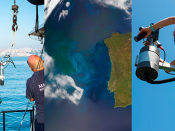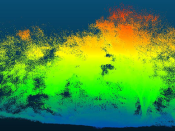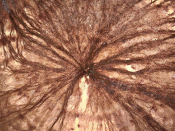Por Marco Pinto (LIP).
Space radiation presents a significant challenge to both human and robotic missions beyond Earth's protective magnetosphere. Composed primarily of galactic cosmic rays (GCRs), solar energetic particles (SEPs), and trapped radiation belts, the space radiation environment can adversely affect spacecraft electronics, materials, and biological systems. In electronics, radiation can induce single-event upsets, latch-ups, and long-term degradation of components.
To mitigate these effects, a thorough process known as radiation hardness assurance (RHA), which includes testing of components on the ground, and model based estimations for each specific space application, has been put in place by different space agencies. However, little effort has been made to validate the RHA methods using flight data. This can lead to overengineering or underengineering increasing the cost or risk of space missions respectively. To address this issue, the European Space Agency launched the CONtinuous feedback of RADiation effects in flight (CONRAD) project in 2022.
In this seminar, I will present the results obtained so far, as well future prespectives for the project. I will also review the space radiation environment and its effects, and discuss the possibility of using radiation effects as monitors of the radiation environment.
Transmissão via Zoom.












